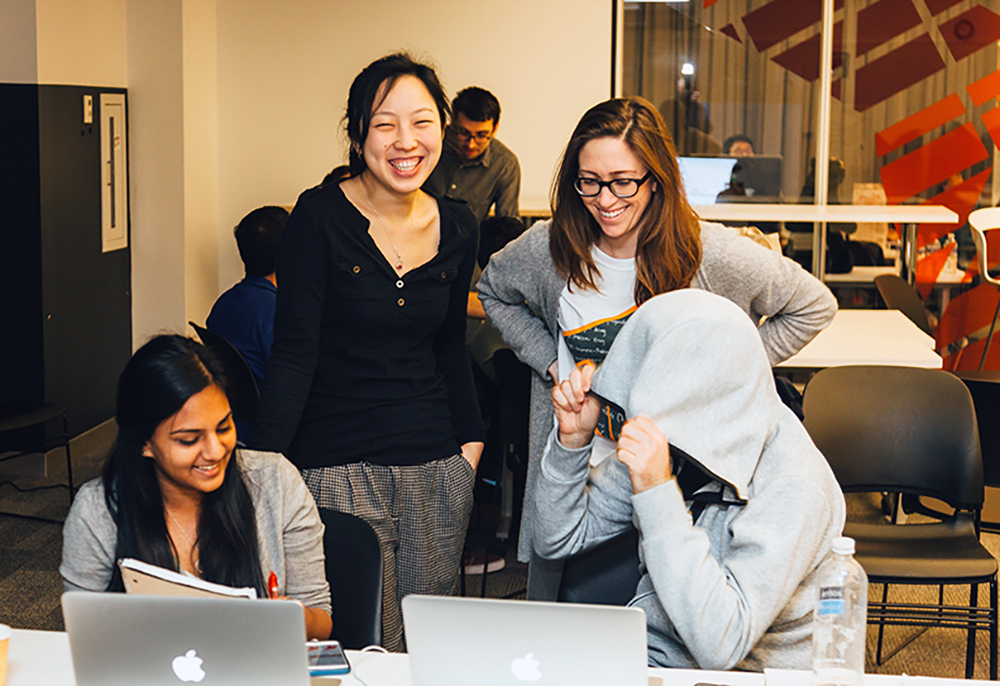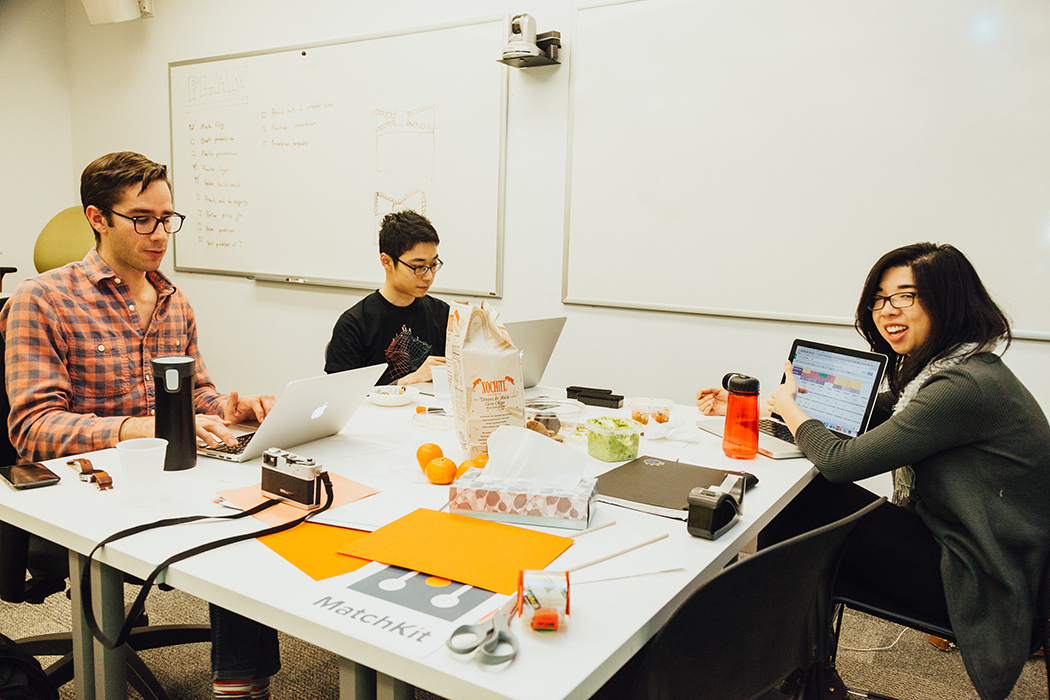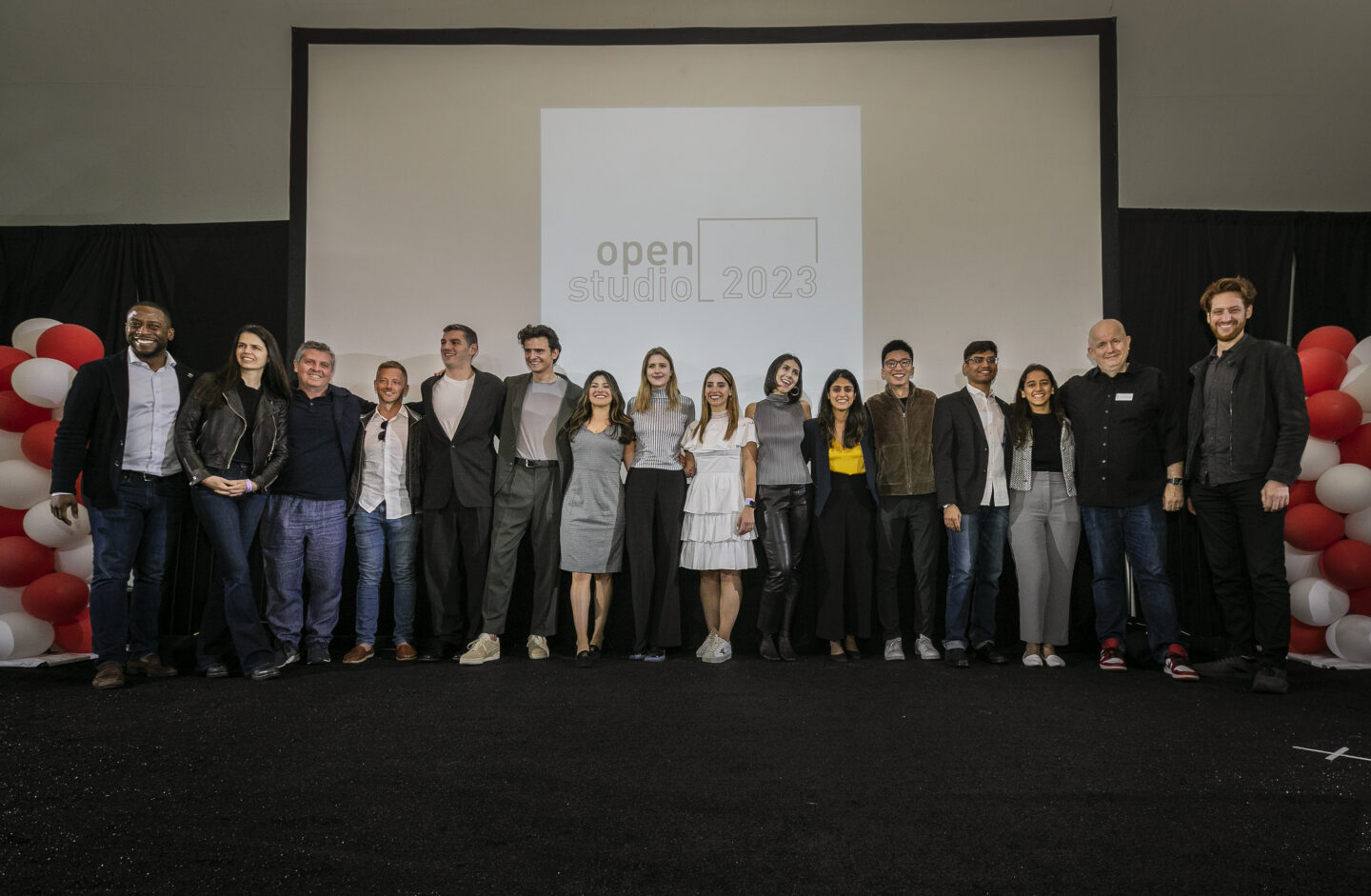Cornell Tech Alum Builds ‘Dreamteam’ to Create All-Star Tech Teams
Categories

Like boy bands and blue hair, not all things occur naturally. And when it comes to building the perfect team for a group project,it’s often a very painful, unnatural process.
Add in the need to balance a team with the right skill sets and interests, and the process gets even trickier.
But one team of students at Cornell Tech actually built a tool to make this matching easier and more efficient.
As part of her Startup Studio project last year, Angel Wong, Master in Computer Science ’16, and her teammates Derek Cutting, MBA ’16, and Yu-chien Chan, Computer Science ’16, built “Dreamteam”—an open source algorithm capable of creating teams of students with balanced skill sets, and pairing them to specific projects that fit their interests.
It quickly became clear that while the product had a lot of applications, it would be particularly useful at Cornell Tech where students work in teams all of the time.
The program went live in August to match Product Studio teams. Since then, students have been clamoring for its deployment in other courses and several companies participating in Product Studio have applauded its results as well.
“One organization said to me, ‘It’s really great how passionate these students are [about their company challenge projects],'” said J McLoughlin, Cornell Tech’s Studio Director who oversees the studio programs at the school. Dreamteam helped match students with the projects they really cared about. “[The students are] not just going through the motion of a class exercise.”
The best match
At its core, Dreamteam is a matching tool. Cornell Tech students are constantly working in teams, and many of these teams rotate throughout the school year, depending on the class. For example, in Startup Ideas, teams change weekly. In Startup Studio, where Wong first developed Dreamteam last year, teams meet for the entire semester.
Building those teams, and ensuring their diversity—that there aren’t too many engineers or MBAs—originally fell to McLoughlin. While the algorithm she used to do so was functional, it was nothing compared to Dreamteam.
How well does Dreamteam work? For the first semester of the 2016–2017 school year, 99 percent of students were placed with one of their top four choices in Product Studio.
Dreamteam’s goal, as the name suggests, is to build a “dream team” of students who are evenly matched, well-suited to each other, and have strengths that dovetail with those of others to produce optimum results. While student satisfaction is key to success, other factors come into play as well, such as whether or not a student has coding ability, or what they are studying.
“Well-balanced teams make students happy to work on projects,” said Wong.
All about the team
The ability to work in a team environment, across multiple disciplines, is today considered a necessary skill in the workplace. No longer do tech advances come from back rooms filled with coders and engineers. Success is an amalgam of inputs: design ideas, communication strategies, business concerns, technological know-how. In this context, the ability to sit across a table and communicate with coworkers from other departments—from marketing to engineering—is paramount.
“[Communication] is a great skill to learn in an educational setting and apply to the work after you graduate,” said Wong. “[Product Studio] is a brief taste of that life skill in play within a school setting.”
Dreamteam helps piece together the foundations of that student experience.
In McLoughlin’s eyes, Wong’s student project was a gem unearthed from their own program’s soil. She was sold not only on Dreamteam’s algorithm, but also its user interface, which presented a clean and simple front-facing tool for students to access over the web.

(From left to right) Cutting, Chan and Wong working on MatchKit, the predecessor of Dreamteam, during a Studio Sprint in spring 2016.
Previously, students had been notified of their team assignments only after these had been generated and stored on Excel spreadsheets. With Dreamteam, results are posted online, and students can check on their teams whenever they choose—they can even look up former team members and contact details.
Given that some teams change weekly, this new approach has been a game changer, McLoughlin said. “Since students are coming from different degree programs, they’re able to meet each other. And if you ever want to email someone from another team, you can go into Dreamteam and look back at that. ”
Happy teams, happy companies
Cornell Tech hired Wong after she graduated to join its in-house development team, The Foundry for the summer. There, working alongside Jai Chaudhary, Master in Computer Science ’15, she fine-tuned the tool so that Dreamteam could launch when classes started this fall. And she will continue to work on the next iteration of the tool, expected fall 2017.
McLoughlin says that companies are already reporting how pleased they are with the level of energy and engagement of student matches facilitated by Dreamteam. She also points out that in a sense Cornell Tech should be seen as the most successful match of all: in the course of teaching students how to collaborate as a team, the institution built a tool — in house and through collaboration — that enhanced its work and strengthened its mission.
“We are practicing what we preach,” said McLoughlin. “Angel did her project, then we hired her, did product development and rebranded Dreamteam for Cornell Tech. So we’re doing the same thing our students are, but our output is to help the Studio curriculum.”
Media Highlights
Tech Policy Press
Content Moderation, Encryption, and the LawRELATED STORIES





